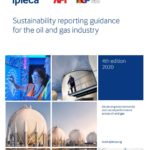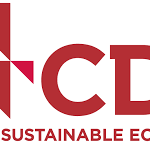A recent Global Environmental Management Initiative report adds to the growing body of evidence correlating social and environmental performance with shareowner value.
According to Cap Gemini Ernst & Young researchers Jonathan Low and Pamela Cohen Kalafut, somewhere between 50 and 90 percent of a company’s market value is created by "intangible assets" such as environmental, health, and safety (EHS) performance. A recent report from the Global Environmental Management Initiative (GEMI), member-based organization of 40 major companies that promotes EHS and corporate social responsibility (CSR) excellence, cites this statistic in linking strong EHS performance with shareowner value.
The report, entitled Clear Advantage: Building Shareholder Value, also cites a "substantial body of evidence" from the academic, nongovernmental organization (NGO), and socially responsible investment (SRI) communities establishing this correlation. The report then advises how best to design, implement, evaluate, and disclose EHS initiatives that can add value.
"The purpose of this new tool is to enable businesses to measure, manage and communicate EHS value to the financial community or, in the words of Bob Brady, retired fund manager at Citigroup, to ‘turn the intangibles into tangibles,’" said Jim Thomas, executive director of EHS at Novartis (ticker: NVS).
Mr. Thomas co-chairs the GEMI work group responsible for the report along with John Harris, former EHS management systems coordinator at Ashland (ASH).
The second section of the report, "Making the Case," presents evidence linking EHS and shareowner value (the first section of the report is its executive summary). For example, the report reprints a chart prepared by Innovest Strategic Value Advisors displaying how stocks of pharmaceutical companies with superior EHS financially outperformed EHS laggards by 17 percent over a one-year period starting in May 2001 (see related SocialFunds.com article).
"There is considerable evidence that EHS contributes to shareholder value in a variety of ways–not only through ‘tangible’ contributions such as risk reduction and profitability improvements, but also through ‘intangibles’ such as brand equity, human capital, and strategy execution," the report states.
The report’s third section identifies 10 intangible value drivers and suggests performance indicators that can be used to quantify their EHS aspects. These indicators are illustrated with real examples from GEMI member companies. To exemplify the value of communication and transparency, the report describes a dialogue between the Calvert Group, an SRI firm, and Bristol-Myers Squibb (BMY) about the company’s bioethics policy.
"Calvert has lauded these policies as a pharmaceutical industry model," the report states. "At [Calvert’s] suggestion, rather than keeping its bioethics policies confidential, the company has decided to make them available upon request to interested stakeholders."
"The transparency dialogue between Calvert and [Bristol-Myers Squibb] supported Calvert’s decision to include the company in the Calvert Social Index, which is used as a basis for inclusion into many of its mutual funds," the report continues.
The fourth section of the report provides the 6-step Clear Advantage process for identifying, assessing, planning, executing, evaluating, communicating, and continually improving EHS performance to stakeholders in ways that can increase value. The report provides resources, such as the "Invisible Advantage" diagnostic tool created by Mr. Low and Ms. Cohen (who also helped devise the Clear Advantage process) to help companies assess the relative strength of their intangible assets.
While the SRI, NGO, and academic communities have long recognized the link between social and environmental performance and shareowner value, the business community has been slower in acknowledging this link publicly. This GEMI report therefore represents a major step forward.
"Every corporation is under intense pressure to create ever-increasing shareholder value," states Gary Pfeiffer, chief financial officer of DuPont (DD), in the report. "Enhancing environmental and social performance are enormous business opportunities to do just that."



